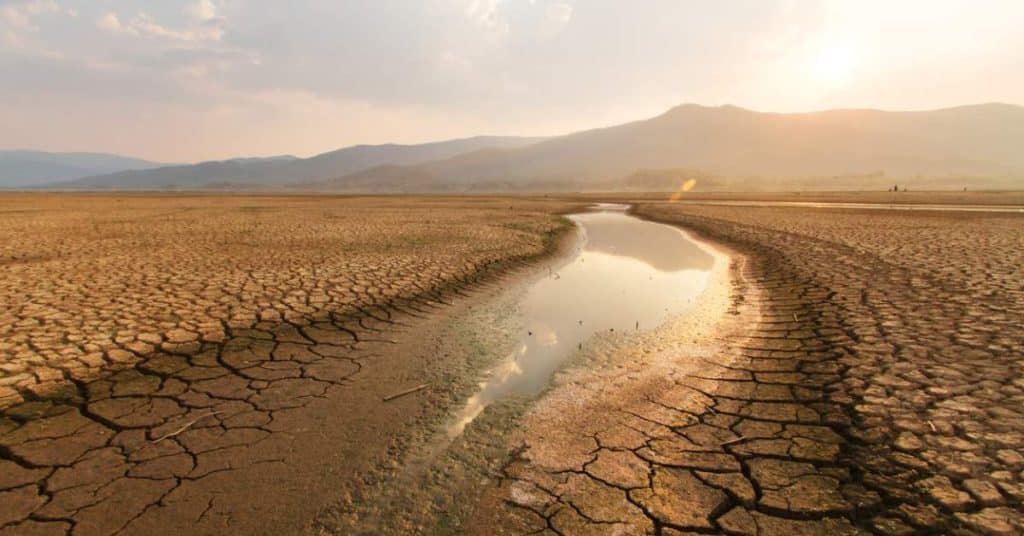In a world where water’s role is often taken for granted, it’s critical to understand the profound consequences that water loss has on biodiversity. While we may associate water with our daily hydration, cleansing routines, and leisure activities, the significance of this precious resource expands far beyond our personal needs. Let’s delve into this intricate world of water, biodiversity, and how their fates are interwoven.

Understanding Water Loss and Its Impacts on Natural Resources
Let’s first define what we mean by water loss. Essentially, it’s the reduction in water availability in ecosystems due to natural processes or human activities. This could mean less rainfall due to changing weather patterns or the draining of wetlands for urban development, or even the contamination of water bodies due to pollution.
Water is among our most vital natural resources, supporting all forms of life, from the tallest redwood to the smallest microbe. Every living thing depends on water for survival. Consequently, when water is scarce, it impacts the diversity of life in ecosystems, affecting everything from the availability of food to the survival of various animal and plant species.
Biodiversity: The Wealth of Life
Now, let’s talk about biodiversity – the beautiful, rich variety of life on Earth, which spans millions of species from towering trees to microscopic organisms. Each species has its unique role to play in its ecosystem, and together they form the intricate web of life.
Biodiversity ensures that natural systems can adapt to changes, recover from disturbances, and continue to provide the ecosystem services upon which all life depends. For us humans, these services include food, fresh water, climate regulation, and even cultural benefits such as recreation and a sense of place. But, unfortunately, the negative impact of human activity, including excessive water consumption, is driving biodiversity loss at an alarming rate.
Water and Biodiversity: A Complex Interplay
Whether it’s fresh water or salt water, every drop plays a crucial role in supporting biodiversity. It’s not just the bodies of water that matter, but also the moisture in the soil, the water vapor in the air, and even the water stored within organisms. However, as the global demand for water rises, the natural habitat of many species is shrinking, causing significant changes in the distribution and behavior of these species.
Consider the example of freshwater habitats such as rivers and lakes. They host a wide range of animals, including various species of fish, and are hotspots of biodiversity. Yet, these habitats are being lost or degraded due to human activity, including the over-extraction of water resources for agriculture, industry, and domestic use. This loss of freshwater habitats is a major driver of biodiversity loss.
Similarly, in coastal communities, the extraction of salt water for various uses is disrupting marine community ecology. This can lead to a decrease in the population of birds that rely on these ecosystems for nesting and foraging. It also increases the chances of invasive species gaining a foothold, further threatening native species.
Impact on Food Supply Chain
The food chain, from production to consumption, is heavily dependent on water. When water scarcity hits, it can trigger a domino effect, with repercussions throughout the food supply chain.
Food Production
When it comes to food production, water loss can severely reduce the growth and productivity of crops. This, coupled with land degradation due to human activities like deforestation, can hamper the availability of sufficient food for both humans and animals.
Food Storage and Distribution
Storage and distribution of food also hinge on water availability. Proper storage techniques, such as refrigeration and freezing, often rely on clean water in some way or another. For instance, water is critical for cleaning and maintaining hygiene in food storage facilities.
Impacts on Species
Let’s now focus on how water loss affects various species – from the larger species to the microscopic particles of life.
Impact on Native Species
For native species that have evolved and adapted to their specific habitats over millennia, water loss can be disastrous. The extinction of species due to loss of their natural habitat is a harsh reality in many parts of the world.
Invasive Species and Alien Species
Water loss often creates conditions that favor invasive and alien species over native species. These invaders can outcompete native species for resources, leading to further declines in native populations and disruptions to local food webs.
Consequences for the Human Population
The human population, too, feels the effects of water loss, both directly and indirectly. As water resources dwindle, providing enough fresh water supply to meet the growing demand becomes increasingly challenging.
This impacts not just the wealthy countries but also, and more acutely, the poorer countries. In many parts of the world, especially in developing nations, people are struggling to access clean, drinkable water. This lack of water can compromise food safety, increase the risk of water- and food-borne diseases, and exacerbate food insecurity.
Furthermore, the loss of biodiversity due to water loss can have far-reaching effects on human well-being. Many of the ecosystem services that we rely on, like nutrient cycling, natural water filtration systems, and climate regulation, are provided by the biodiversity that thrives in healthy water-rich ecosystems.
For instance, wetlands, which are often biodiversity hotspots, are natural water filtration systems. They absorb and filter out pollutants from soil and water, providing us with clean water. But when these wetlands dry up or are drained for land use, we lose these valuable ecosystem services, resulting in less clean water and increased water treatment costs.
Moreover, the loss of biodiversity can have profound impacts on food security. Many of the plant and animal species that make up our diets rely on specific conditions and other species to survive. A decrease in biodiversity can mean less available food and higher food prices, hitting the poorest communities the hardest.
Impacts on Human Health and Livelihoods
Water scarcity and biodiversity loss can also impact human health and livelihoods in less direct ways. For instance, it can affect mental health due to the stress and anxiety of dealing with water shortages and food insecurity. Furthermore, for people whose livelihoods depend on natural resources – such as farmers, fishermen, and forest gatherers – the loss of biodiversity can lead to job loss and financial hardship.
The Role of Climate Change
The crises of climate change add another layer of complexity to this issue. Rising temperatures can accelerate water loss through increased evaporation, while also making weather patterns more unpredictable. This can lead to more frequent and severe droughts, floods, and storms, causing further harm to biodiversity.
On the other hand, the loss of biodiversity can exacerbate climate change. For instance, when forests, which are rich in biodiversity, are cut down, they can no longer absorb carbon dioxide, leading to higher greenhouse gas emissions. Furthermore, their destruction often involves burning, which releases large amounts of carbon dioxide and other pollutants into the atmosphere.
The Way Forward: Solutions and Actions
Despite the many challenges, there are plenty of reasons for hope and action. By addressing water loss and protecting biodiversity, we can create a more sustainable and resilient future.
Sustainable Water Management
Effective water management can help to reduce water loss and its impacts on biodiversity. This can involve actions such as improving irrigation efficiency in agriculture, implementing water-saving measures in industries and households, and preserving and restoring natural water bodies and their surrounding ecosystems.
Biodiversity Conservation
Conservation efforts aimed at protecting biodiversity can help to mitigate the impacts of water loss. This can include protecting and restoring habitats, creating wildlife corridors to connect fragmented habitats, and managing invasive species.
Climate Action
Addressing climate change is a key part of the solution. This can involve reducing greenhouse gas emissions through switching to renewable energy sources, improving energy efficiency, and protecting and restoring forests and other carbon sinks.
Educating and Advocating
Raising awareness about the importance of water and biodiversity and advocating for policies that protect them are also crucial. Everyone can play a part in this, whether by learning and spreading the word, making sustainable choices, or engaging in community conservation efforts.
Conclusion: Water Loss and Biodiversity – Our Shared Responsibility
The challenge of water loss and its impacts on biodiversity is a shared one. It affects us all, regardless of where we live, and it requires collective action to address. By valifying and protecting these precious resources, we can ensure a healthy and thriving planet for generations to come.
Our journey is long, the task immense, but the ripple effect of our collective actions can turn the tide. Let’s continue this conversation, spread awareness, and take decisive action. For ourselves, for biodiversity, and for our planet.
